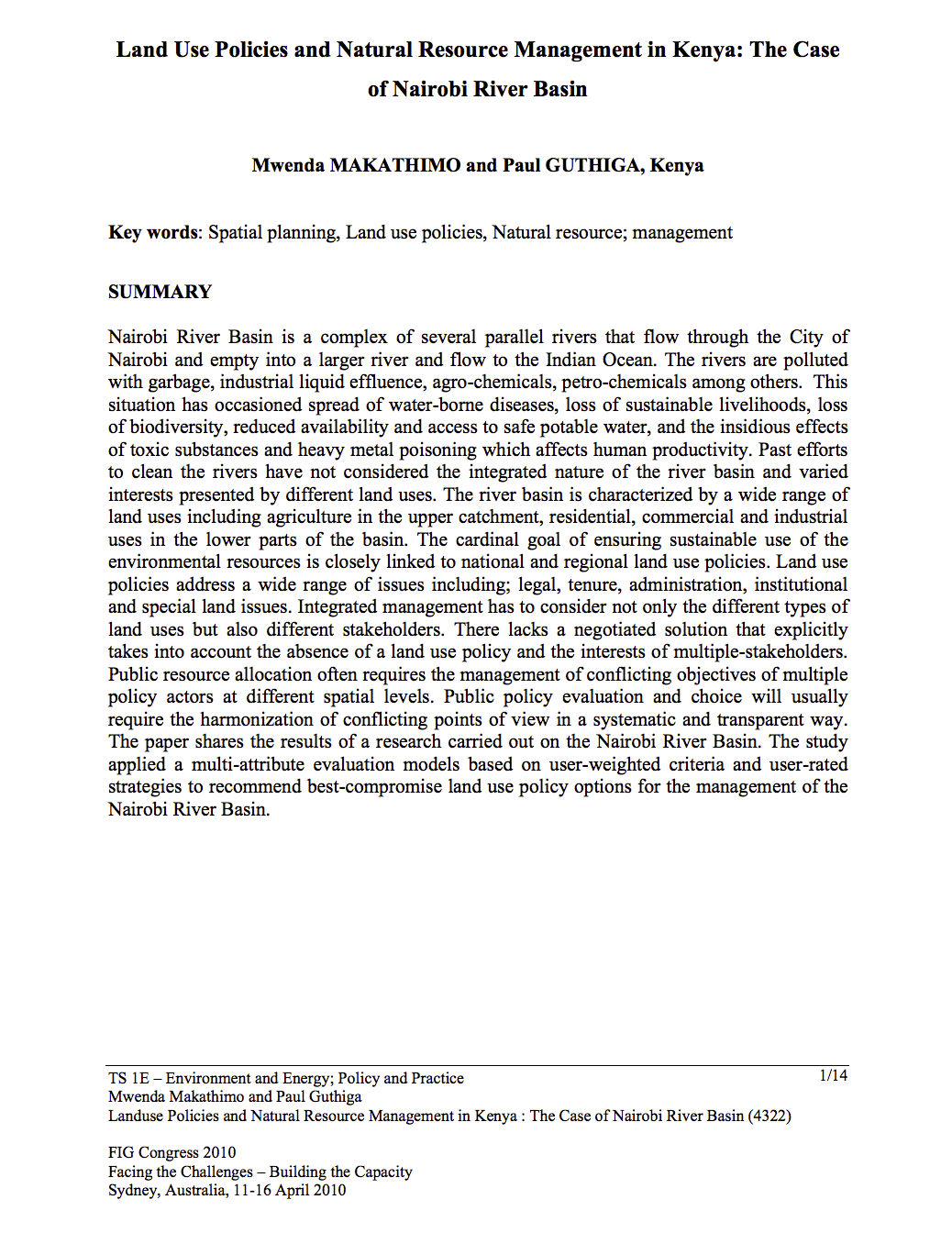Resource information
Nairobi River Basin is a complex of several parallel rivers that flow through the City of Nairobi and empty into a larger river and flow to the Indian Ocean. The rivers are polluted with garbage, industrial liquid effluence, agro-chemicals, petro-chemicals among others. This situation has occasioned spread of water-borne diseases, loss of sustainable livelihoods, loss of biodiversity, reduced availability and access to safe potable water, and the insidious effects of toxic substances and heavy metal poisoning which affects human productivity. Past efforts to clean the rivers have not considered the integrated nature of the river basin and varied interests presented by different land uses. The river basin is characterized by a wide range of land uses including agriculture in the upper catchment, residential, commercial and industrial uses in the lower parts of the basin. The cardinal goal of ensuring sustainable use of the environmental resources is closely linked to national and regional land use policies. Land use policies address a wide range of issues including; legal, tenure, administration, institutional and special land issues. Integrated management has to consider not only the different types of land uses but also different stakeholders. There lacks a negotiated solution that explicitly takes into account the absence of a land use policy and the interests of multiple-stakeholders. Public resource allocation often requires the management of conflicting objectives of multiple policy actors at different spatial levels. Public policy evaluation and choice will usually require the harmonization of conflicting points of view in a systematic and transparent way. The paper shares the results of a research carried out on the Nairobi River Basin. The study applied a multi-attribute evaluation models based on user-weighted criteria and user-rated strategies to recommend best-compromise land use policy options for the management of the Nairobi River Basin.



